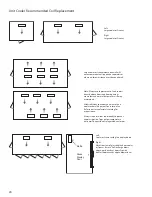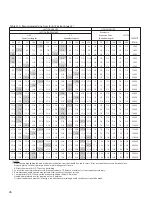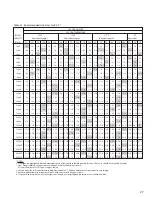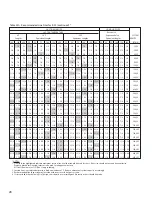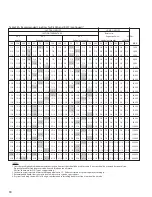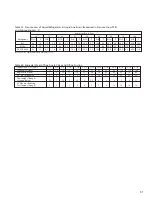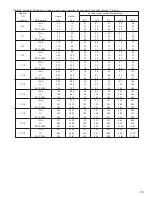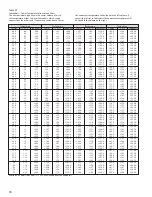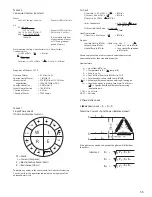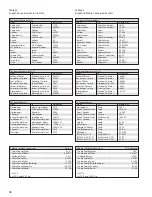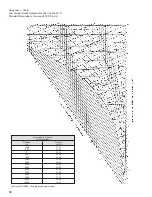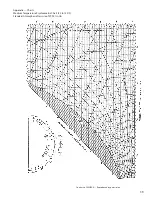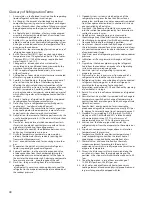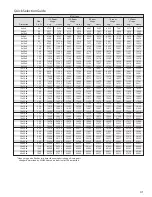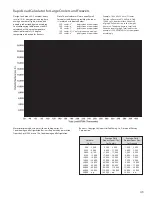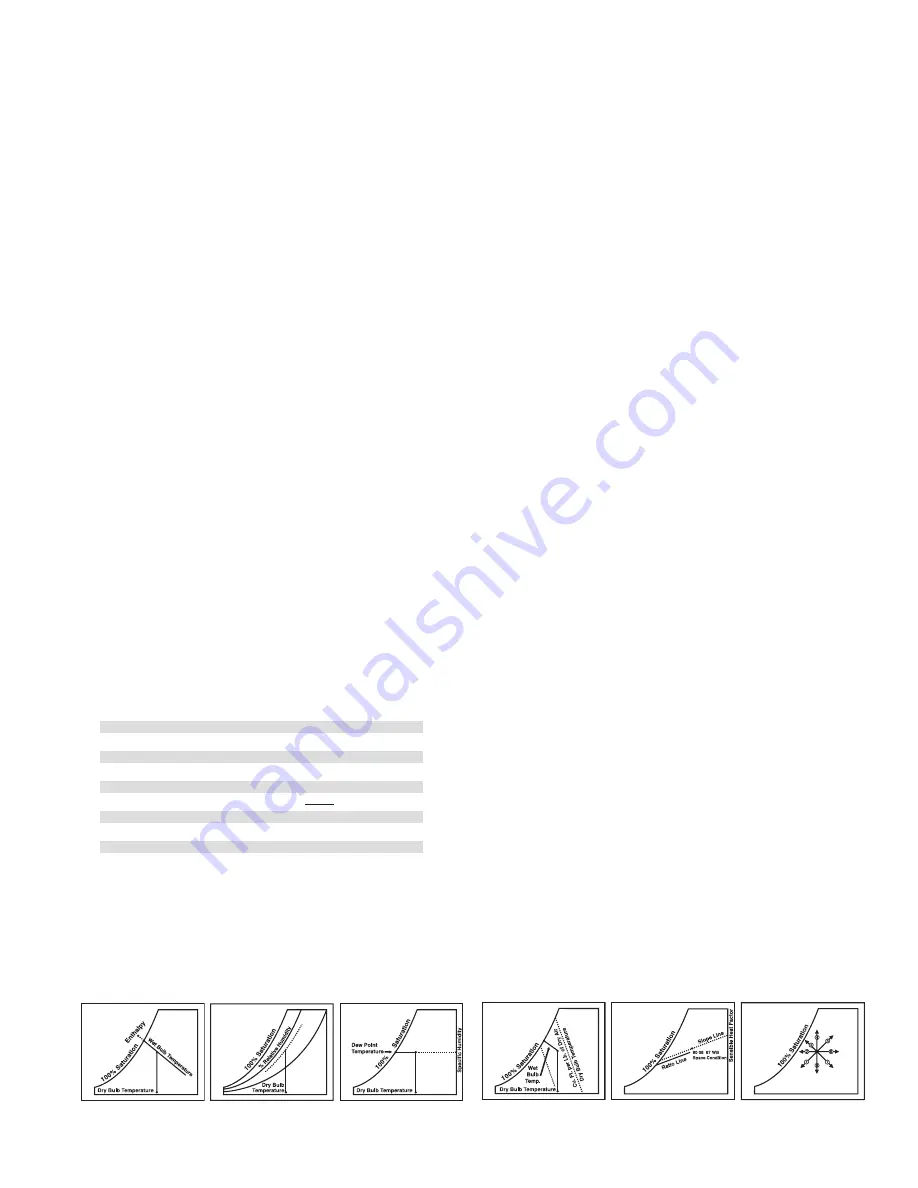
37
78.1
SR/lb dry air
7000
Use of the Psychrometric Chart
From two known properties of air, its condition can be located on
the Psychrometric chart and all remaining properties can then be
found by reading the appropriate scale.
Figure 1 Illustrates a condition plotted at the intersection of its
dry bulb and wet bulb temperatures. The dry bulb temperature
is represented on the chart by the vertical lines with its scale
across the bottom. The wet bulb temperature is read along
the saturation line and is represented on the chart by the solid
diagonal lines. Enthalpy at a saturation, for a given wet bulb
temperature is read from the diagonal scale at the left using the
diagonal lines extending from the saturation line.
Figure 2 Illustrates a condition plotted at the intersection of its
dry bulb temperature and relative humidity. Relative humidity is
represented on the chart by the curved lines which are marked in
percent relative humidity.
Figure 3 Illustrates a condition plotted at the intersection
of its dry bulb and dew point temperatures. The dew point
temperature is read along the saturation line at the intersection
of the Horizontal Humidity line. The value of the specific humidity
is read from the scales at the right in either pounds or grains of
moisture per pound of dry air by selecting the appropriate scale.
Figure 4 Illustrates the determination of specific volume from the
chart. Specific volume is represented by the broken diagonal lines
marked in cubic feet per pound of dry air. Intermediate points are
read by interpolation between the lines.
Figure 5 Illustrates the use of sensible heat factor to determine
the air conditions required to satisfy a specified space
temperature and load conditions. The sensible heat factor is the
ratio of internal sensible heat to internal total heat load of the
space being conditioned. A straight line from the sensible heat
factor scale through the circled point of the chart to the slope line
from the space condition point to the saturation line. Air supplied
to the space at any temperature condition located on the ratio
line (and in the proper volume) will satisfy the room load.
Example — Using the point which is circled on the Psychrometric
Chart, the following values are obtained:
Dry Bulb Temperature
80.0ºF.
Wet Bulb Temperature
67.0ºF.
Dew Point Temperature
60.3ºF.
Relative Humidity
51.1%
Specific Humidity
A) 0.01115 lbs./lb. dry air =
B) 78.1 grains/lb. dry air
Enthalpy at saturation 31.62 BTU/lb. dry air
Specific Volume 13.83 Cu. Ft./lb. dry air
Figure 6 … *Air Conditioned Process
1. Cooling and Dehumidification — A decrease in both dry bulb
and specific humidity represented by a line sloping
downward and to the left. Total heat content (both sensible
and latent heat) is decreased.
2. Sensible Cooling — A decrease in dry bulb and sensible heat
content represented by a horizontal line directed to the loft
along the constant specific humidity line. Specific humidity
and dew point remain constant.
3. Evaporating Cooling — (Air passed through spray water or
wetted surface at wet bulb temperature) – A decrease in dry
bulb (reduced sensible heat content) and an increase in dew
point and specific humidity (increased latent heat content)
represented by a line sloping upward and to the left following
a constant wet bulb line – no change in total heat content.
4. Humidification — An increase in the specific humidity as a
result of moisture added, represented by a line directed
upward.
5. Heating and Humidification — An increase in both sensible
heat and specific humidity, represented by a line sloping
upward and to the right.
6. Sensible Heating — An increase in dry bulb and sensible heat
content, represented by a horizontal line directed to the right
along the constant specific humidity line, Specific humidity
and dew point remain constant.
7. Chemical Drying — (Air passed through a chemical drying
agent) – A decrease in dew point and specific humidity,
represented by a line sloping downward and to the right.
8. Dehumidification — a decrease in the specific humidity as a
result of removing moisture, represented by a line directed
downward.
Definitions
Dry Bulb Temperature — The temperature indicated by a
thermometer, not affected by the water vapor content air.
Wet Bulb Temperature — The temperature of air indicated by
a wet bulb thermometer; the temperature at which water, by
evaporating into air, can bring the air to saturation adiabatically at
the same temperature.
Dew Point Temperature — The temperature to which water vapor
in air must be reduced to produce condensation of the moisture
contained therein.
Relative Humidity — The ratio of actual vapor pressure in the
air to the vapor pressure of saturated air at the same dry bulb
temperature.
Specific Humidity (Moisture Content of Humidity Ratio) — The
weight of water vapor per pound of dry air.
Sensible Heat — Heat which when added or subtracted from
the air changes only its temperature with no effect on specific
humidity.
Latent Heat — Heat which effects a change of state without
affecting temperature, as in evaporating or condensing moisture.
Enthalpy (Total Heat) — The sum of sensible and latent heat. In
the chart, enthalpy represents units of total heat content above
an arbitrary base in terms of BTU per pound of dry air.
Specific Volume — Volume per unit of weight, the reciprocal of
density, in terms of cubic feet per pound of dry air.
Sensible Heat Factor — The ratio of internal sensible heat to
internal total heat load.
Ratio Line — The line extending from the space condition to the
saturation line at a slope determined by the sensible heat factor.
Fig 1 —
Dry Bulb and Wet Bulb
Fig 2 —
Dry Bulb and Relative
Humidity
Fig 3 —
Dry Bulb and Dew Point
Fig 4 —
Specific Volume
Fig 5 —
Sensible Heat Factor
Fig 6 —
Air Conditioning Process
* (See Above)


